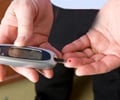Scientists at Washington University School of Medicine in St. Louis have made a breakthrough in the fight against diabetes, by examining the immune cells long thought to be responsible for type 1 diabetes, in diabetic mice.
While examining the immune cells from isolated insulin-making structures in the pancreas known as the islets of Langerhans, they successfully caught the immune cells, known as dendritic cells, "red-handed" carrying insulin and fragments of insulin-producing cells known as beta cells.This can be considered as the first step toward starting a misdirected immune system attack that destroys the beta cells, preventing the body from making insulin and causing type 1 diabetes.
The results have may help scientists in finding ways to treat type 1 diabetes, which is also called juvenile diabetes because it frequently develops in children.
"Now that we've isolated dendritic cells from the pancreas, we can look at why they get into the pancreas and determine which of the materials that they pick up are most critical to causing this form of diabetes. That may allow us to find ways to inhibit dendritic cell function in order to block the disorder," said senior author Emil R. Unanue, M.D., the Paul and Ellen Lacy Professor of Pathology.
Usually, patients need insulin injections to survive because the immune system has destroyed the islets of Langerhans, which contain the body's only beta cells. The insulin these cells make is required for the critical task of regulating blood sugar levels.
Dendritic cells in the islets have long been discovered and scientists said that dendritic and other antigen-presenting cells pick up bits of protein from around the body and present them to lymphocytes to initiate an immune system reaction. The lymphocytes lead immune attacks against foreign invaders like bacteria and viruses and eliminate them, clearing infections.
Advertisement
While dendritic cells' presence in the islets and their ability to summon immune attacks made them likely suspects in type 1 diabetes, it was difficult to isolate them from the pancreas for closer examination.
Advertisement
Calderon, M.D., found indications that the cells were carrying granules of insulin and pieces of proteins from beta cells on their cell surfaces. He later exposed the dendritic cells to lymphocytes taken from diabetic mice. The lymphocytes were activated by the dendritic cells of the islets and switched into attack mode.
In a separate line of research, Unanue's lab has learned that dendritic cells in the pancreas may normally have beneficial effects on the health of beta cells. They've shown that when dendritic cells are absent from the pancreas, the beta cells are smaller, an indication that they're not as healthy.
The results of the study are reported online in The Proceedings of the National Academy of Sciences.
Source-ANI
SRM











